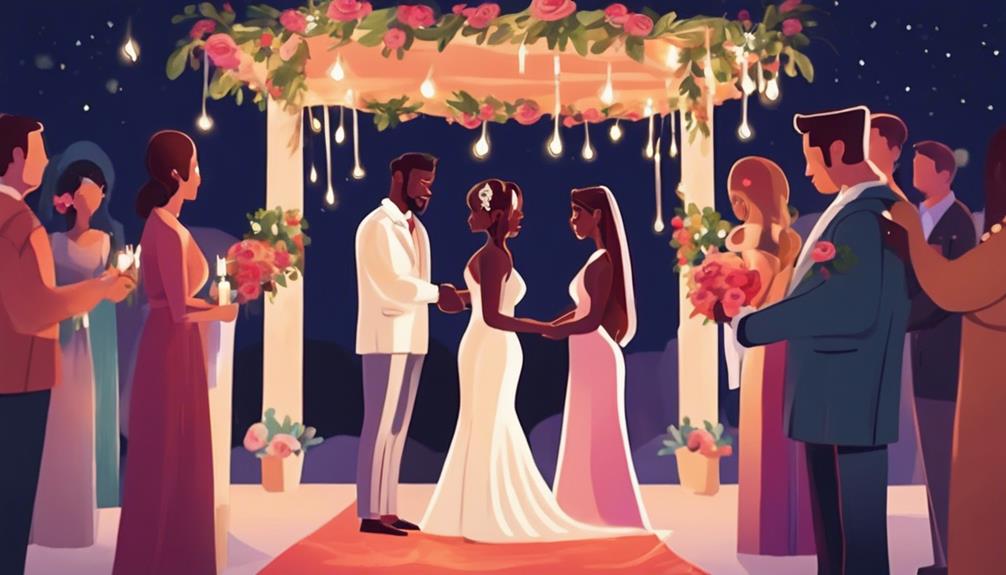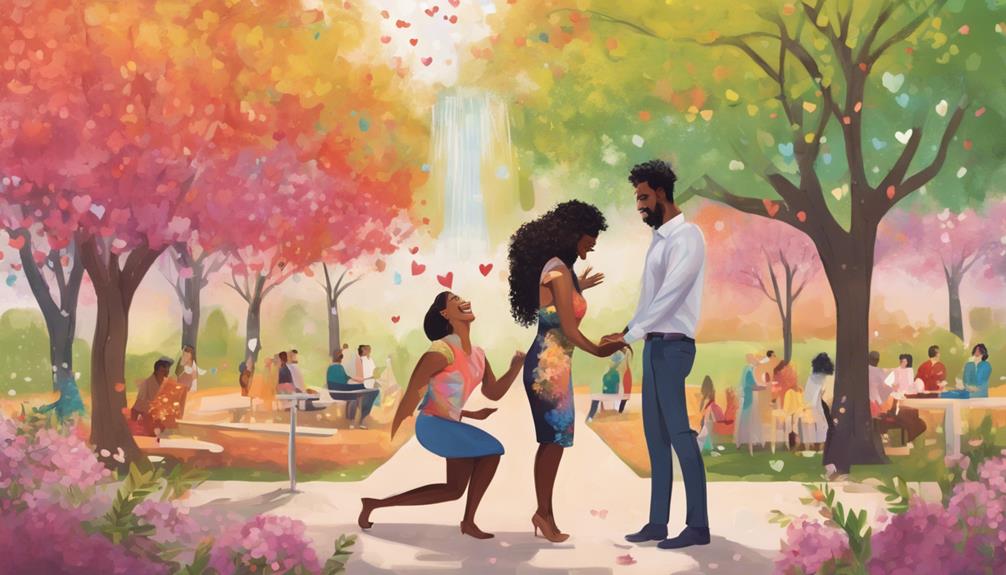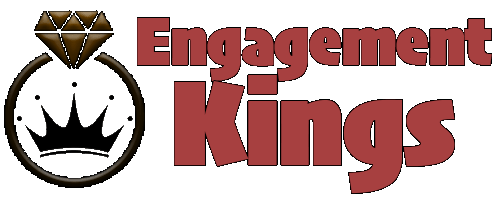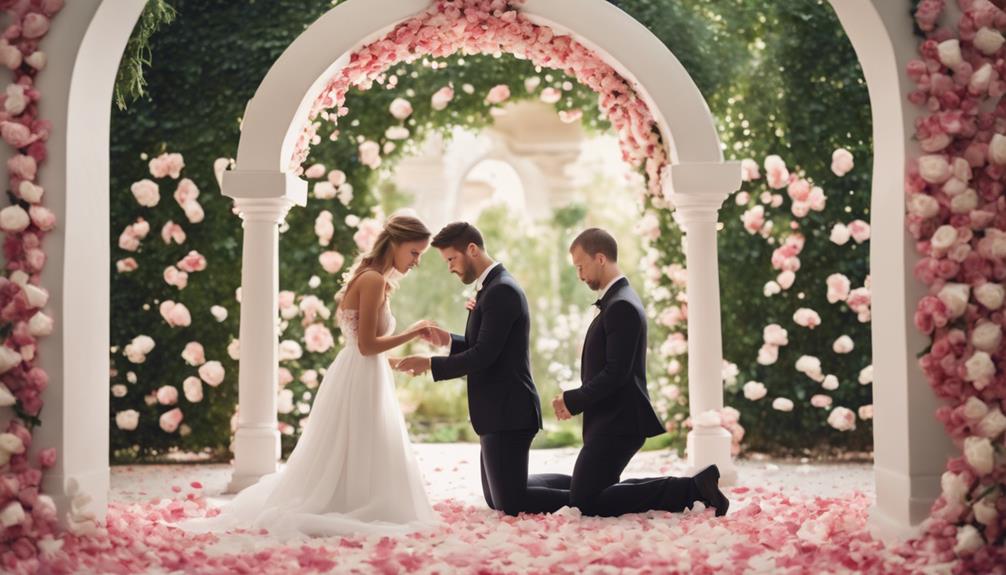When considering marriage vs. proposal, you’re looking at two defining stages in a relationship. A proposal is an emotional promise expressing your intention to share a future with someone. It highlights your vulnerability and trust as you commit to facing challenges together. Cultural traditions influence how proposals unfold, often marked by symbolic gestures like kneeling. Marriage, however, not only deepens the emotional bond but also provides a legal framework offering stability, security, and social recognition. It’s a shift from promise to partnership, blending personal desires with societal expectations. With deeper insights, you’ll understand their unique significance.
Defining Proposals and Marriage

A proposal is a pivotal moment in a romantic relationship when one partner formally asks the other for their hand in marriage, often accompanied by an engagement ring. This act signifies the intention to commit to a shared future and a specific type of partnership, where both parties commence a journey towards marriage.
In many heterosexual proposals, tradition still plays a role, with the man typically proposing to the woman, which reflects historical gender norms. However, these conventions are increasingly evolving as couples embrace modern values.
Today, many couples are already living together before the proposal, making the act a confirmation of an already established partnership rather than the beginning of one. This shift highlights a growing trend where discussions about marriage often precede the formal proposal, emphasizing mutual agreement and understanding.
The proposal itself, while still cherished, is seen as an expression of vulnerability and trust. It acknowledges the emotional commitment each partner is willing to make. By sharing this moment, you and your partner demonstrate a readiness to navigate future challenges together, reinforcing the bond that living together has already strengthened.
Cultural Significance
Cultural significance in marriage proposals varies widely across the globe, reflecting deep-rooted traditions and evolving societal norms. In many cultures, how you propose marriage can be a performative act, often involving the iconic gesture of getting down on one knee. This act symbolizes chivalry and devotion, particularly in Western traditions, where it’s steeped in historical values.
A professor of sociology might explain that such rituals reinforce traditional gender roles, but they’re also evolving as people increasingly value personal connection over convention.
In Japan, proposals can involve the Omiai, where matchmakers facilitate the process, underlining the importance of family and community. Here, it’s not just about the two individuals but a union between families.
Meanwhile, in Western cultures, the act of presenting an engagement ring remains a significant tradition, although modern couples might just forget the fancy proposal and opt for mutual agreements.
As societal views shift, non-traditional practices that emphasize equality and individual preferences are gaining acceptance. Whether it’s a grand gesture or a simple conversation, the cultural significance of proposals lies in their ability to bridge personal desires with cultural expectations, making each unique and meaningful.
Traditional Rituals

In the domain of traditional marriage proposals, certain rituals stand out for their enduring symbolism and emotional impact. For instance, in Western cultures, the classic image of a man kneeling with an engagement ring in hand persists as a powerful gesture. About 17 out of 20 proposals include this act, symbolizing humility and a deep commitment to a shared future. The phrase “Will you marry me?” becomes a pivotal moment, carrying immense weight in its simplicity.
Surprise plays a significant role, though reality often tempers expectations. While many hope for a moment of unexpected joy, surveys suggest the ideal surprise doesn’t always align with what actually happens. Even so, the effort to create a memorable occasion underscores the proposal’s importance.
Seeking parental approval remains a respected tradition, with about 12 out of 20 engagements involving this step. This gesture reflects respect and a desire to honor familial bonds before forming a new family unit.
Across cultures, unique engagement rituals abound. In Japan, the Omiai process involves matchmakers, emphasizing family and community roles. These practices remind you that proposals are deeply personal yet universally shared experiences.
Emotional and Legal Aspects
Many find themselves weighing the emotional and legal aspects of the journey from proposal to marriage. When you think about proposing, it’s more than just a ring and a kneel. This act is packed with vulnerability and trust, highlighting the emotional depth of your commitment. It’s the moment where you open your heart, signaling your intention to build a future together.
However, while proposals capture the emotional essence, marriage provides the legal framework that supports and protects that commitment.
Marriage isn’t just a ceremony; it’s a legal contract offering stability and security. Through marriage, you gain social recognition and legal benefits, like tax advantages and inheritance rights, which informal arrangements can’t guarantee. These legal aspects strengthen your bond, allowing you and your partner to navigate life’s challenges with a safety net.
Interestingly, emotional satisfaction in relationships tends to rise when couples engage in mutual discussions rather than focusing solely on traditional proposals. This shift shows how you might cherish personal connections over the formalities.
Still, marriage holds personal meaning for many, proving that even as societal views evolve, its significance remains deeply rooted in both emotional and legal domains.
Evolving Social Dynamics

Over the years, you’ve likely noticed a shift in how society views marriage and proposals, driven by evolving social dynamics. The average age for marriage in the U.S. has risen, with men marrying over 30 and women over 28. This change mirrors new social norms where couples prioritize cohabitation and financial stability before tying the knot.
As a result, marriage isn’t rushed, allowing partners to establish stronger foundations before committing legally and socially.
Today, many couples opt for discussions about engagement instead of traditional proposals. This approach promotes egalitarian dynamics, where decisions are mutual rather than one-sided. Financial considerations also play a significant role. Instead of extravagant gestures, couples now lean towards budget-friendly proposals, valuing emotional satisfaction over grandiosity.
Authenticity and personal connection have become more important than sticking to ritualistic formalities.
Moreover, the rise of cohabitation has lessened the perceived necessity for formal proposals. Many couples share their lives and finances long before considering marriage, making the formal question less central.
These evolving dynamics signify a broader acceptance of diverse paths to commitment, where traditional norms blend with modern values.
Conclusion
As you reflect on proposals and marriage, you realize they each play unique roles in your journey of love. A proposal sparks excitement and anticipation, marking the beginning of your shared future. Marriage, however, is where you truly build a life together, embracing both its challenges and joys. While proposals often involve grand gestures, marriage nurtures a deeper, lasting commitment. Understanding these milestones helps you appreciate the dynamic and evolving nature of your romantic partnership.



